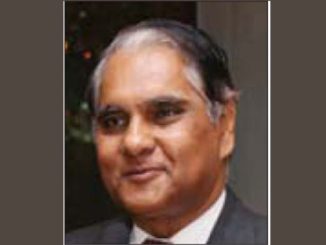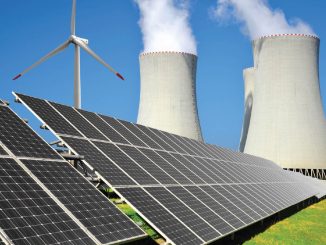
The power distribution segment has shown considerable improvement over the past year. With the prime objective of supplying uninterrupted and quality power to all, the government has taken a number of initiatives to strengthen the grid, increase energy access and improve the operational and financial performance of discoms. These include the Ujwal Discom Assurance Yojana (UDAY), the Deendayal Upadhyaya Gram Jyoti Yojana (DDUGJY) and the Integrated Power Development Scheme (IPDS). Under the schemes, notable progress has been recorded during the past year. On September 25, 2017, the government has launched yet another scheme called the Pradhan Mantri Sahaj Bijli Har Ghar Yojana (Saubhagya) with the aim of electrifying all households by December 2018.
However, several issues continue to face the distribution segment. These include a high level of aggregate technical and commercial (AT&C) losses, inadequate tariff revisions in various states and low power demand from the discoms. A look at the performance of discoms and key developments in the distribution segment…
Discom performance
The distribution network has been growing at a steady pace. As of March 2016, distribution line length and transformer capacity stood at about 9.29 million ckt. km and 620,284 MVA respectively. The total energy sold by the discoms in 2015-16 is estimated to have crossed 800 billion units (BUs), as against 754 BUs sold in 2014-15. The consumer base is estimated to have increased from 227 million as of March 2015 to about 235 million as of March 2016.
Overall, the discoms recorded an improvement in their operational performance. For one, the level of AT&C losses (for the 26 states and the union territory of Puducherry participating in UDAY) declined from 21.1 per cent in 2015-16 to 20.2 per cent in 2016-17. Second, the gap between the average cost of supply and average revenue realised reduced, continuing its declining trend. It stood at Re 0.45 per unit as of March 2017 as against Re 0.59 per unit as of March 2016. However, the cost coverage ratio for most discoms (25 out of 41 discoms that were analysed) remains below 90 per cent as per the Power Finance Corporation’s report on the Integrated Rating for State Power Distribution Utilities. This can be attributed to a substantial increase in expenses and non-cost-reflective tariffs. Further, power quality has improved over the past year. The average duration of power cuts has come down from 13.61 hours per month in August 2016 to 10.1 hours per month in August 2017.
Key developments
UDAY
UDAY was launched in November 2015 and the last date to join the scheme was March 31, 2017. During this period, 26 states (excluding West Bengal, Odisha and Nagaland) and one union territory (Puducherry) have joined the scheme. Under the scheme, the states completed the takeover of their respective discoms’ debt in March 2017. Meanwhile, bonds worth Rs 2.32 trillion (addressing 86 per cent of the debt envisaged to be taken over under UDAY) have been issued. As of August 2017, bonds worth Rs 370 billion remain to be issued, which would be done in due course. As per the Ministry of Power (MoP), the participating discoms have saved approximately Rs 150 billion as of March 2017, as a result of the debt reduction and other operational interventions. Now, the states will start taking over the losses of discoms in a graded manner. As per the provisions of the scheme, the states will take over 5 per cent of the discoms’ losses in 2016-17 in the current fiscal year.
Rural electrification
The DDUGJY has made significant progress in rural electrification since its launch in December 2014. As against the 18,452 unelectrified villages as of April 2015, only 2,959 villages are remaining to be electrified as of September 28, 2017. Of these, electrification is already in progress in 2,858 villages. These villages are scheduled to be electrified by May 1, 2018. The focus on household electrification has increased over the past year. Of about 179.66 million rural households, 138.83 million are electrified. More than 90 per cent of the remaining unelectrified households (about 40 million) are located in nine states, namely, Uttar Pradesh, Bihar, Madhya Pradesh, Odisha, Jharkhand, Maharashtra, Assam, Rajasthan and Karnataka.
To electrify not only the remaining rural households, but the unelectrified urban households by the end of 2018, the government has very recently launched the Saubhagya scheme. The total outlay sanctioned for the scheme is Rs 163.2 billion, including government budgetary support of Rs 123.2 billion. Of this, Rs 140.25 billion has been earmarked for rural households while the remaining is for urban households.
IPDS and R-APDRP
Under the IPDS, aimed at strengthening the sub-transmission and distribution networks in urban areas, about 500 projects with an aggregate cost of Rs 259.13 billion have been approved as of August 2017. These projects are being implemented across 3,606 towns in 32 states/ UTs. The government has approved an aggregate grant of Rs 160.62 billion for these projects though only Rs 34.07 billion has been released till date.
Further, with respect to the Restructured Accelerated Power Development and Reforms Programme (R-APDRP), subsumed under the IPDS as a separate component relating to IT enablement of the distribution segment, a total of Rs 53.74 billion has been sanctioned as of August 2017, of which Rs 34.19 billion has been released. Of the 1,405 towns sanctioned for IT enablement, 1,356 towns have achieved “go live” status. Further, 18 towns have completed the implementation of supervisory control and data acquisition systems, as against the 59 towns for which funds have been sanctioned. A total of 52 control centres have been commissioned across these towns. Under Part B of the R-APDRP (relating to strengthening of the distribution network), 869 projects have been completed against the 1,227 projects awarded.
In addition, various smart grid projects being implemented in the country are contributing towards the strengthening and modernisation of the distribution network. Recently, tenders for about 5 million smart meters were issued for the states of Uttar Pradesh and Haryana.
Power for All
The Power for All programme has been one of the key steps towards ensuring round-the-clock and reliable supply of power to all consumers. All 36 states and UTs have committed to participate in the programme in order to achieve the target by 2019. The states have prepared comprehensive roadmaps covering all segments of the power sector.
Energy efficiency
Under the Unnat Jyoti by Affordable Lighting for All scheme launched in January 2015, 262.57 million LED bulbs, 3.39 million tube lights and 1.25 million fans have been distributed across the country so far. This has resulted in energy savings of around 34.1 BUs per year and reduction in peak demand by 6,900 MW. Further, under the Buildings Energy Efficiency Programme launched in May 2017, about 10 million LED lights, 1.5 million energy-efficient ceiling fans, and 0.15 million energy-efficient air conditioners are to be retrofitted by Energy Efficiency Services Limited in more than 10,000 large government/private buildings by 2020. In August 2017, in another move to promote energy efficiency, the Ministry of Finance issued guidelines for the mandatory installation of energy-efficient appliances in all central government buildings across India.
Distribution franchise
In June 2016, the distribution franchise space, which had been experiencing limited activity, regained attention with two franchise contracts, for Kota and Bharatpur, awarded to CESC Limited for a period of 20 years. The company commenced operations in these cities in September and December 2016 respectively. In February 2017, CESC secured the third franchise, for the Bikaner circle in Rajasthan, also for a period of 20 years.
In April 2017, another franchise was awarded in Ajmer, Rajasthan, to Tata Power for a period of 20 years. Earlier, in January 2017, Torrent Power Limited entered into a renewal and amendment agreement with Maharashtra State Electricity Distribution Company Limited for power distribution in the Bhiwandi circle for a further period of 10 years, with effect from January 26, 2017. In June 2017, bids were invited by Gridco Limited for the award of distribution franchises in six circles, namely, Bargarh, Bolangir, Aska, Bhanjanagar, Baripada and Jajpur. The bids were closed in the month of July and the contracts are yet to be allotted.
App-based portals
In the past two to three years, the government has developed a number of app-based monitoring portals in the power sector aimed at enhancing consumer participation and increasing transparency in the implementation of government programmes. These include the GARV dashboard launched in October 2015 for the effective and efficient monitoring of the village electrification programme and it was updated in December 2016 to include data on household electrification; the Vidyut Pravah app launched in March 2016 to give updates on a real-time basis; and the URJA app launched in June 2016 to provide information on discom-wise performance under the IPDS. Most recent additions to the list have been the MERIT portal and a weather portal, launched in June 2017, to manage the merit order despatch of power, and short-and medium-term demand, respectively.
The way forward
While the improvement in operational efficiency has been slower than targeted, it is still remarkable considering the dismal performance of the distribution segment in the past.
Going ahead, power distribution reforms are likely to remain high on the government’s agenda as evident from the recently launched Saubhagya scheme. The MoP is preparing a long-term distribution perspective plan. Under this, the Central Electricity Authority will determine the infrastructure and investments required by the discoms on an annual basis till 2021-22. Other focus areas include open access, separation of carriage and content, rationalisation of tariffs, and reduction in subsidies. In this regard, the MoP has recently released a paper proposing various measures to ease open access regulations. Overall, the segment is likely to have a bright future provided that government initiatives are implemented in a timely and effective manner.



